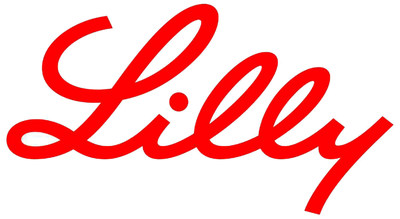Tirzepatide led to superior A1C and body weight reductions from baseline in adults with type 2 diabetes after 40 weeks of treatment in topline results from Eli Lilly and Company’s (NYSE: LLY) SURPASS-1 monotherapy clinical trial evaluating the efficacy and safety of tirzepatide compared to placebo
| INDIANAPOLIS, Dec. 9, 2020 /PRNewswire/ -- Tirzepatide led to superior A1C and body weight reductions from baseline in adults with type 2 diabetes after 40 weeks of treatment in topline results fromEli Lilly and Company‘s (NYSE: LLY) SURPASS-1 monotherapy clinical trial evaluating the efficacy and safety of tirzepatide compared to placebo. Using the efficacy estimandi, the highest dose of tirzepatide led to an A1C reduction of 2.07 percent and reduced body weight by 9.5 kg (11.0 percent). More than half (51.7 percent) of participants in this arm achieved an A1C less than 5.7 percent – the level seen in people without diabetes. The overall safety profile of tirzepatide was similar to the well-established GLP-1 receptor agonist class, with gastrointestinal side effects being the most commonly reported adverse events. Treatment discontinuation rates due to adverse events were less than 7 percent in each tirzepatide treatment arm. Tirzepatide is a novel investigational once-weekly dual glucose-dependent insulinotropic polypeptide (GIP) and glucagon-like peptide-1 (GLP-1) receptor agonist that integrates the actions of both incretins into a single molecule, representing a new class of medicines being studied for the treatment of type 2 diabetes. The primary and key secondary endpoints of SURPASS-1, the first phase 3 trial of the comprehensive SURPASS program, included superior A1C and mean body weight reductions compared to placebo. Study participants, 54.2 percent of whom were treatment-naïve, had a relatively short mean duration of diabetes of 4.7 years, a baseline A1C of 7.9 percent and a baseline weight of 85.9 kg. “Tirzepatide delivered impressive A1C and weight reductions for people with type 2 diabetes in this trial, confirming and building upon the phase 2 data that were released in 2018,” said Julio Rosenstock, M.D., Director of the Dallas Diabetes Research Center and Principal Investigator of SURPASS-1. “The study took a bold approach in assessing A1C targets. Not only did nearly 90 percent of all participants taking tirzepatide meet the standard A1C goal of less than 7 percent, more than half taking the highest dose also achieved an A1C less than 5.7 percent, the level seen in people without diabetes – an unprecedented finding and unique endpoint in trials evaluating glucose-lowering agents.” Treatment differences for two estimands – efficacy and treatment-regimenii – were evaluated for the three tirzepatide doses (5 mg, 10 mg and 15 mg) compared to placebo. Across both estimands, all three tirzepatide doses reached statistical significance in A1C and body weight reductions from baseline and in the percentage of participants who achieved an A1C of less than 7 percent (the American Diabetes Association’s recommended target for people with diabetes) or less than 5.7 percent.
In the treatment-regimen estimand, each of the tirzepatide doses led to statistically significant A1C and body weight reductions:
No events of severe hypoglycemia or hypoglycemia less than 54 mg/dL were observed in the tirzepatide treatment arms. The most commonly reported adverse events were gastrointestinal-related and mild to moderate in severity, usually occurring during the dose escalation period. For study participants treated with tirzepatide (5 mg, 10 mg and 15 mg, respectively), nausea (11.6 percent, 13.2 percent, 18.2 percent), diarrhea (11.6 percent, 14.0 percent, 11.6 percent), vomiting (3.3 percent, 2.5 percent, 5.8 percent) and constipation (5.8 percent, 5.0 percent, 6.6 percent) were more frequently experienced compared to placebo (6.1 percent [nausea], 7.8 percent [diarrhea], 1.7 percent [vomiting], 0.9 percent [constipation]). The overall treatment discontinuation rates were 9.1 percent (5 mg), 9.9 percent (10 mg), 21.5 percent (15 mg) and 14.8 percent (placebo). The majority of the discontinuations in the 15 mg and placebo arms were due to reasons other than adverse events (such as concerns due to the coronavirus pandemic and family or work reasons). “As a leader in diabetes care, we have a nearly 100-year heritage of innovating to advance care for people living with diabetes. Tirzepatide is the first dual GIP/GLP-1 receptor agonist to complete a phase 3 trial,” said Mike Mason, president, Lilly Diabetes. “We are impressed by these initial results showing how tirzepatide performed in people with a relatively short duration of diabetes, and we look forward to seeing more results in people who are later in the course of diabetes in future studies from our robust SURPASS clinical trial program.” The complete SURPASS-1 study data have not yet been evaluated but will be presented at the American Diabetes Association’s® 81st Scientific Sessions® and published in a peer-reviewed publication in 2021. About tirzepatide About SURPASS-1 and the SURPASS clinical trial program The SURPASS phase 3 global clinical development program for tirzepatide has enrolled more than 10,000 people with type 2 diabetes across eight clinical trials, five of which are global registration studies. The program began in late 2018 with results anticipated in late 2020 and 2021. About Diabetes About Lilly Diabetes About Eli Lilly and Company This press release contains forward-looking statements (as that term is defined in the Private Securities Litigation Reform Act of 1995) about tirzepatide as a potential treatment for people with type 2 diabetes and the timeline for future readouts, presentations and other milestones relating to tirzepatide and its clinical trials, and reflects Lilly’s current belief and expectations. However, as with any pharmaceutical product, there are substantial risks and uncertainties in the process of research development and commercialization. Among other things, there can be no guarantee that the studies will be completed as planned, that future study results will be consistent with the results to date or that tirzepatide will receive regulatory approvals. For further discussion of these and other risks and uncertainties, see Lilly’s most recent Form 10-K and Form 10-Q filings with the United States Securities and Exchange Commission. Except as required by law, Lilly undertakes no duty to update forward-looking statements to reflect events after the date of this release. 1 Centers for Disease Control and Prevention. National Diabetes Statistics Report, 2020. Atlanta, GA: Centers for Disease Control and Prevention, U.S. Dept. of Health and Human Services; 2020. i Efficacy estimand represents efficacy prior to discontinuation of study drug or initiating rescue therapy for persistent severe hyperglycemia.
SOURCE Eli Lilly and Company | ||||||||||||||||||||||||||||||||||||||||||||||
Company Codes: NYSE:LLY | ||||||||||||||||||||||||||||||||||||||||||||||





